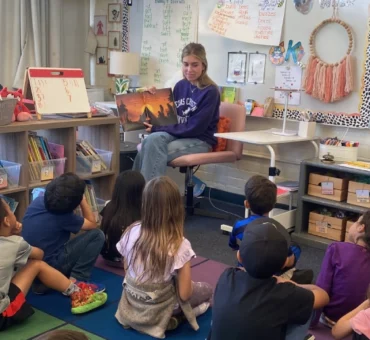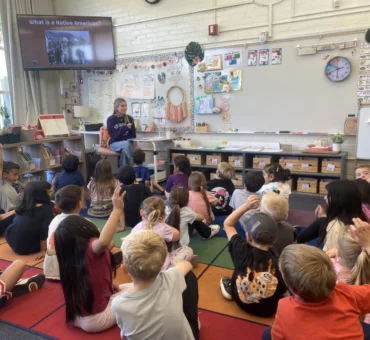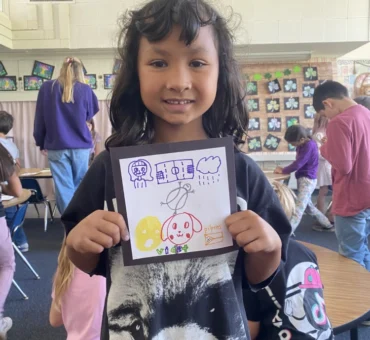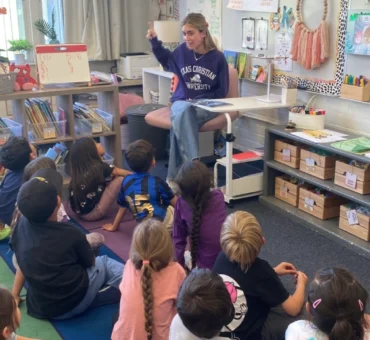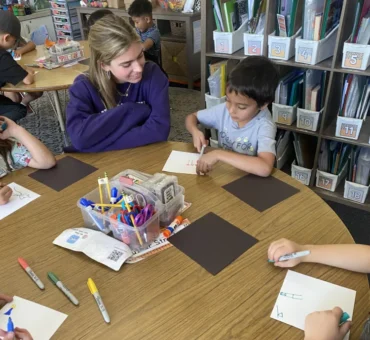-
Call us anytime
(+99) 123456789
-
Opening time
Sat - Sun 08.00 to 14.00
-
Email us now
contact@rootsandresilience.com
Advocate
Exploring Chickasaw Heritage
Exploring Chickasaw Heritage: Students learned about the traditional way of life, the land the Chickasaw people called home, and the origins of written communication through pictographs. Each child created their own unique identity pictograph, connecting past to present through art and storytelling.
Interview
June 26th, 2023
An Interview with Luther John, Chickasaw Language Master
There is no better way to get to know a people and their culture than talking to the people themselves. With the help of the Chickasaw Cultural Center, I was able to get in contact with prominent Chickasaw community member Luther John. With the official title of Language Master, John’s contributions to the vitality of the Chickasaw language cannot be understated. He is an important community figure and native Chickasaw speaker who is dedicated to educating the public about the Chickasaw language and culture. John has even worked with Rosetta Stone to create content in Chickasaw to support the teaching and longevity of the language.
Kendall McGuire: Okay hi, so can you tell me about your connection to the Chickasaw tribe?
Luther John: Well, I was raised Chickasaw in Fillmore, OK. My family is all Chickasaw and lives in Oklahoma. My grandmother and grandfather were part of the Dawes roll as part of the Chickasaw tribe. I’ve been speaking Chickasaw all my life and I still speak it today, and I’m 79 years old.
I have also helped with the Chickasaw Language Department for a while now. I love it and I’m still doing all I can to preserve that part of our culture here in the Chickasaw Nation.
K: How have the Chickasaw culture and traditions impacted your life?
LJ: Oh, very strongly and spiritually. Even in our singing, we actually sing Choctaw hymns. People wanted to change the singing of the Choctaw and make their own Chickasaw hymns, but the elders didn’t want that to happen because we are part of the Choctaw nation. When we first came to Oklahoma– because we were removed from our old land back in Mississippi– we were singing those songs, the same Choctaw songs.
K: How has your community changed over the years?
LJ: In the area I’m from, back in 1955, many Chickasaw people relocated to different cities to make a livelihood. This really separated a lot of families when I was young.
Where I come from, we still have churches, which I am a member of today. We still gather at the same churches, but we all come from different communities to attend. So it’s still the same as it was. It’s just not as many in the area as it used to be.
K: Can you share any stories or memories about the Chickasaw traditions that have been passed down in your family and in the community?
LJ: Something that has been brought back in the last few years is stickball, which is in fact something I’m really involved in. My friends and I do a lot of stickball games and tournaments. As a matter of fact, I’m getting ready to go to Philadelphia Mississippi, in a few weeks for what they call a national tournament, and it’s all stickball.
K: Pardon me, what’s stickball?
LJ: Stickball is a game that started years ago when the tribes were battling. So they made a game called stickball.
In the game, you have a personally-made stake which is about three feet long with a little net at the head. When an argument with the enemy wouldn’t be settled, that’s when they would play this game. It’s a very dangerous game, to be honest.
But it’s not only the Chickasaws involved with this game nowadays. Tribes involved include the Creek, Seminole, Cherokees, and Choctaws. It’s very interesting to see this game come back to life and be very popular with the tribes, and it’s really fun to watch the games and be included in them. It’s also boys and girls, which really makes the game popular.
K: How have the Chickasaw cultural traditions evolved over time?
LJ: My grandmother and grandfather used to tell me about stickball like we just mentioned. Stomp dancing has also started back up again. There’s a group of Chickasaw that goes all over the nation because they’re called on to come in to do the stomp dances. I think a few of them have come to California as I recall. They went to the northern part of the state to do the dance demonstrations to carry on our culture and let others see that we’re still involved in a lot of things that we don’t want to forget or push aside.
K: How has the Chickasaw tribe adapted to the challenges of modern-day society while still maintaining their cultural identity?
LJ: Well, I believe it’s really changed a lot because of the education and the elders may have opinions but because of this and because Chickasaw Nation, really involved the younger generation. To get an education has really changed a lot of our lives, younger people especially, and it’s been very helpful to all of us. Today, we have Chickasaws that are university graduates and school teachers. So it has really, really helped in the education department for all of Chickasaw Nation.
K: Can you speak to the importance of language within the Chickasaw culture and any efforts to preserve it?
LJ: Oh, yes very much so. So I am one of the fluent speakers. And wherever I go I tell people about traditions that I never want to forget. Or If I can help someone learn a language I am very involved with that. I’m working right next door to a team that has been studying the language for three years and they’re very good at what they do. They’re teaching an online course starting in a couple of months through Rosetta Stone.
K: Do you teach the language?
LJ: Yes, I do. I am in fact a minister, and sing Choctaw hymns in the Chickasaw language. And all the prayers that I say are Chickasaw. I translate, for people who do not understand my prayer, in English.
K: What are some ways you teach language?
LJ: Well, I’m working right now to translate phrases for a movie shoot. The scriptwriter will call and ask if I would translate the English word that he wanted to Chickasaw. So that’s part of my job also.
K: How has the relationship between the Chickasaw tribe and the US government evolved over the years?
LJ: It has gotten much better than what it was in the past because we have a lot better education. And the ones that are placed in these positions are well-versed in the government and the attorneys. Our new governor has also helped a lot with these situations. So I think it’s gotten so much better than it has in the past.
K: What are some things that the government and the Chickasaws agree and disagree on?
LJ: Take for instance our language right now. The government happened to promote it more than they have in the past. As I mentioned earlier, so many things have changed because of these two things. And the importance of spiritual walks is number one in my book. And that’s what I tell people when I speak to them about everything that I do.
K:How can non-native people better understand and support the Chickasaw community and their cultural heritage?
LJ: We have been very supportive recently but most importantly have supportive people, especially here in Oklahoma. In this area, we have people that are very supportive because of the things that we do, or our supervisors. Together, we look at things and organize what should be done. We’re very supportive of the communities here in the cities and the state. So, the communication has gotten so much better now than it has in the past.
K: So good. Oh, thank you so much for your time. I really appreciate it.
Contact
Stay Touch With
Roots & Resilience
About Me
Hi! I’m Kendall McGuire. Inspired by my Chickasaw heritage and family stories, I started researching at 13. By 15, I published a book and launched Roots and Resilience to share and preserve Chickasaw history.
